People often ask me how big do Ball Pythons get. The average is between 3 and 4.5ft (90 and 137cm) long. Let’s take a look at what determines this size and what influences their growth. We’ll also discuss a larger than average Ball Python: the Volta.
Ball Python hatchlings grow at different rates, reaching sexual maturity within 2 to 4 years, and reaching full size not long after. Most females get to 3.5-4.5ft (106-137cm) long and most males 3-3.5ft (90-106cm). Adult Ball Pythons vary enormously though, and any length from 2.5 to 5.5ft (76-168cm) is possible.
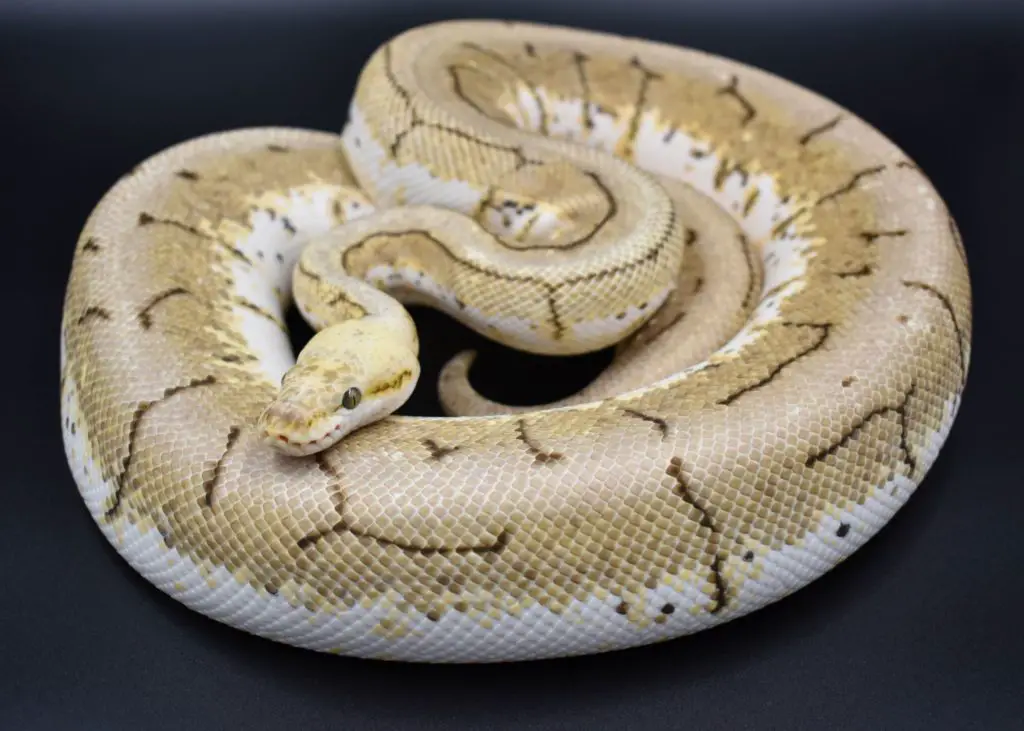
Adult Ball Python size
The average size for Ball Pythons is 3-3.5ft (90-106cm) for males and 3.5-4.5ft (106-137cm) for females, with the occasional 5ft (152cm) female cropping up. Generally, this makes for adult males that weigh 1200-1800g and adult females that weigh 1800-3000g, though their weight can vary considerably over the course of a year.
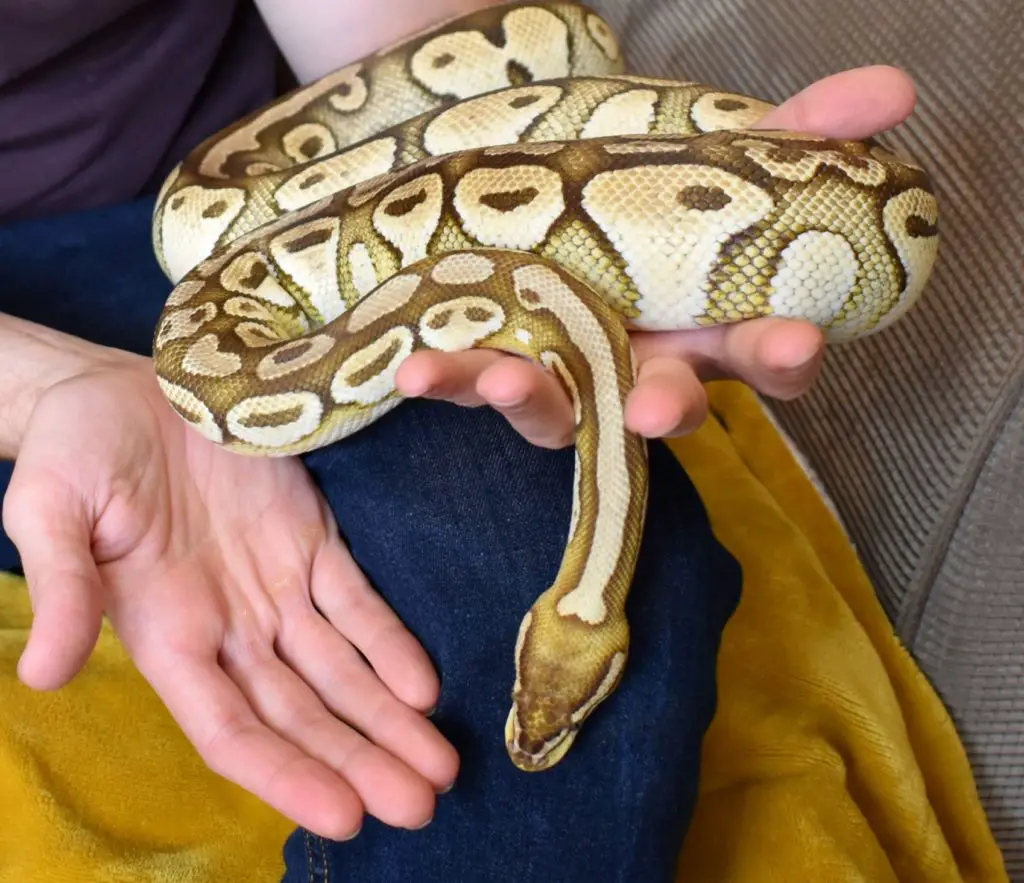
How big do Ball Pythons get in the wild?
If you’ve done much herping, you’ll have noticed that a lot of wild snakes look really scrawny compared to captives. Wild Rainbow Boas, for example, can look positively emaciated.
Strangely enough, this doesn’t seem to be the case with Ball Pythons. Even freshly caught wild Ball Pythons tend to be of similar size and weight to healthy captives. This may be because many of them inhabit savannah and agricultural land in central africa that has consistently high populations of small mammals.
What you would notice with wild Ball Pythons, however, is that none of them are obese. Obesity in this species is definitely a captive problem due to overfeeding, and causes an array of health issues. (The weights given in this article are those for healthy snakes – not overweight ones.)

How big do female Ball Pythons get?
In my experience adult female ball pythons tend to be slightly more consistent in their size, with most eventually exceeding 1800g. This is due to sexual dimorphism driving a larger size in females so that they have enough room for eggs.
Males, on the other hand, belong to two groups: those that stay small and those that don’t! For example, many males never get over 1200g, whereas Prince, seen below, is over 4ft (120cm) in length and over 2000g in weight.
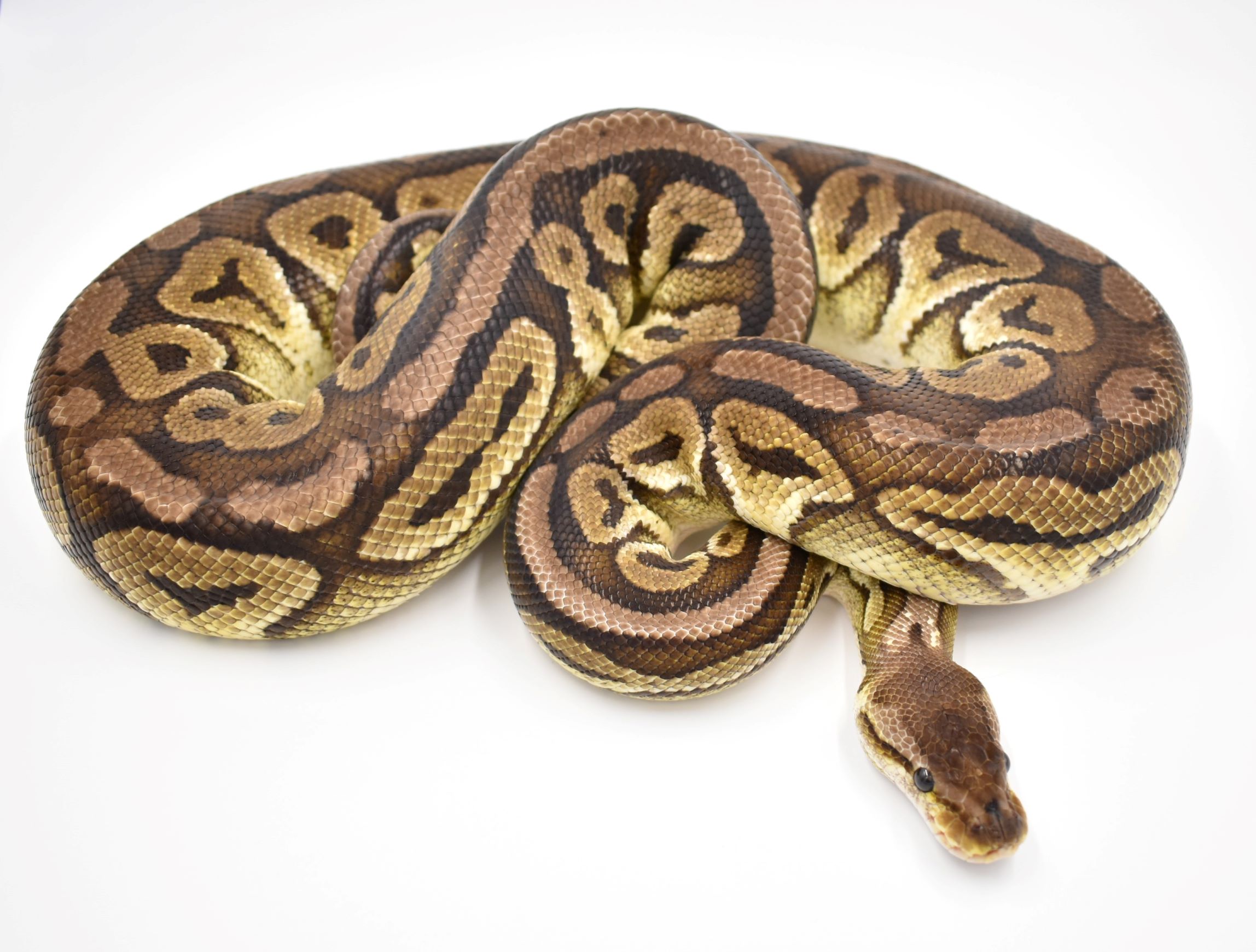
Prince here is a little unique… He’s far bigger than the average length for males, and likes to fight his hiding cave, branches and anything else he comes into contact with during the breeding season. He also refuses to sit still for a photo. Fortunately, the ladies love him.
How old do Ball Pythons get?
Ball Pythons live a long life, often over 20 years. To reach their full length only takes them around 2 to 4 years though, if they have access to the correct environmental conditions.
This means clean water, an appropriate amount of food, the right humidity and a temperature gradient. If you’d like to learn more about how old they can get, you can read more about it in my article on how long Ball Pythons live.
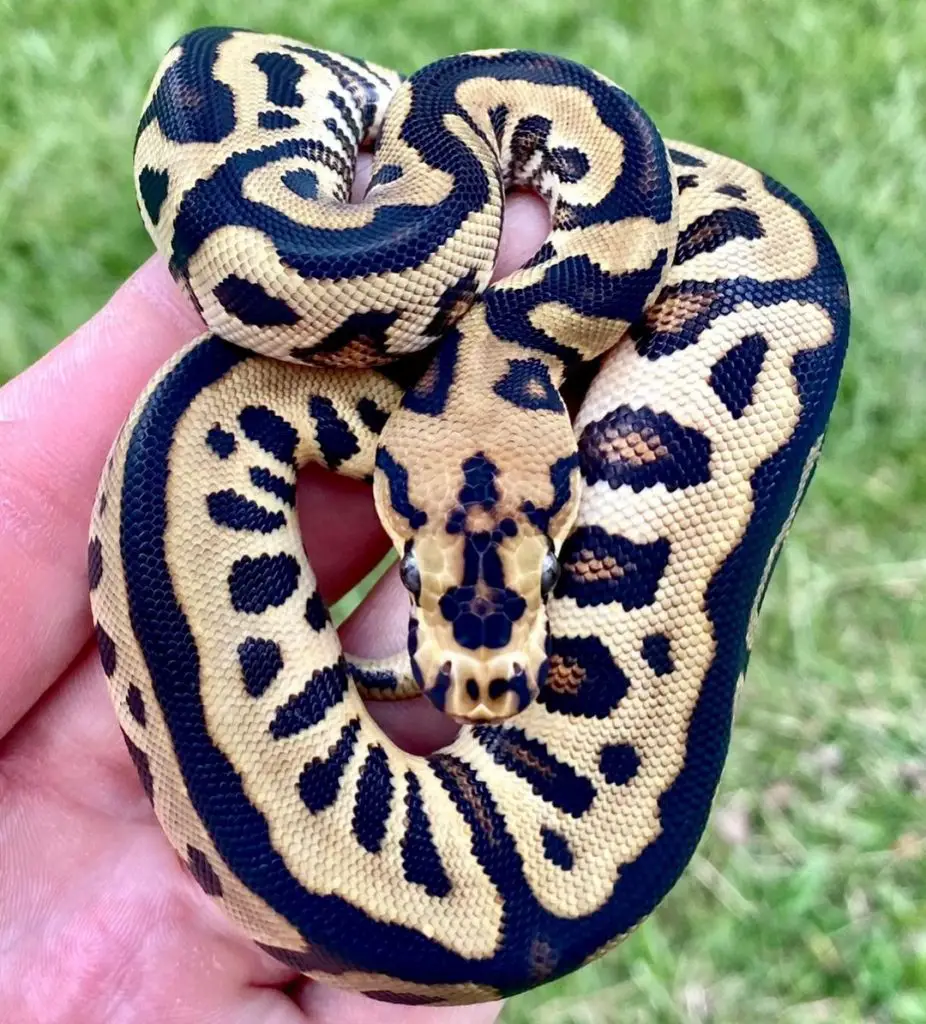
Ball Python size is probably a polygenic trait
Nine times out of ten, if you buy a captive bred, healthy snake it will grow to the average size for its sex. The main reason for this is that size in Ball Pythons is probably a polygenic trait.
Polygenic traits are those that are governed by several genes, as opposed to just one. They are also continuous – meaning that they vary on a scale, but usually fall close to an average. Size, measured in height, weight or length is thought to be polygenic in humans and most other animals.
Over the years, numerous studies have supported the idea of polygenic traits, though there is usually some debate about how many genes are involved for each one. Could it be 5 or 500 genes that govern a Ball Python’s length? I honestly couldn’t tell you, but I’ll take the word of more experienced scientists than myself that it is several!
So, what does this tell us? Basically, it tells us that there probably isn’t just one gene that determines Ball Python size. It also tells us that a unique combination of at least a handful of genes is probably necessary to create an abnormally large or small Ball Python.
This is in sharp contrast to colour and pattern mutations like pinstripe, that can be inherited easily because they are only one dominant allele of one gene.
In a nutshell, any baby Ball Python that you buy will almost definitely fall close to the average size at full maturity. Growing a freak, 10ft (3 m) Ball Python is probably less likely than winning the lottery!
If you’re looking a baby ball python that will grow to a certain size, all you can do is ask a reputable breeder about the parents for a slight indication of how big it might one day grow to. It’s still a roll of the dice though, really.
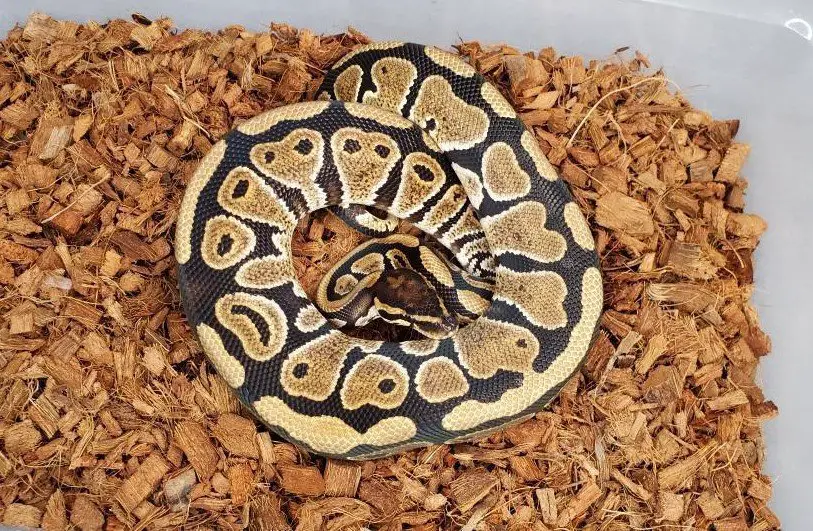
How long do Ball Pythons take to get to full size?
Growth rate can vary for several reasons, but most Ball Pythons take 2 to 4 years to reach their full size. Overall, the polygenic nature of size does mean that big parents tend to have big babies.
Inheritance can’t explain everything though. In fact, size and growth rate are heavily influenced by food intake.
Food intake is influenced by environmental factors, and maintaining a safe, stress-free environment goes a long way to keeping Ball Pythons feeding on a regular basis. In a nutshell, stressed out Ball Pythons turn into picky eaters.
That said, a juvenile Ball Python’s personality can also play a role. Some babies are hungry from the get-go, eating like pigs and growing rapidly until they reach breeding weight.
These hatchlings tend to reach an impressive weight of 800-900g by 12 months, then the full size by the age of 2 or 3. Other babies are picky or nervous, eating much less and only reaching 400g at the 12month mark.
Picky babies don’t necessarily reach a smaller overall size, though. The male we discussed earlier, Prince, grew slowly and refused any food other than mice. It took him 6 years to reach full size, but now he’s bigger than any other male I have.

How can I make my Ball Python grow faster?
Optimum growth requires optimum husbandry! A healthy, happy Ball Python will eat more consistently and grow more quickly. Giving the animal a set up that meets the requirements for humidity, heat and security is genuinely the best way to achieve fast growth.
For younger snakes, this usually means a small tub set up. One thing that every breeder goes through is selling a baby to someone who immediately puts it into a 4ft (120cm) vivarium, and then gets angry when it stops feeding!
This isn’t necessarily their fault though. Many websites promote big set ups because it means bigger commissions through affiliate links. Even without these sales tactics, the temptation to put hatchling ball pythons into a big, beautiful vivarium can be strong.
Unfortunately, this just doesn’t work very well with Ball Pythons. They like well-defined, safe environments as babies, then gain confidence and explore more as they get older. Remember, a ball python’s set up should grow with it: a baby set up for a baby and an adult set up for an adult!
Factors that affect growth include:
- humidity
- heat
- security (feeling safe)
- appropriate enclosure size
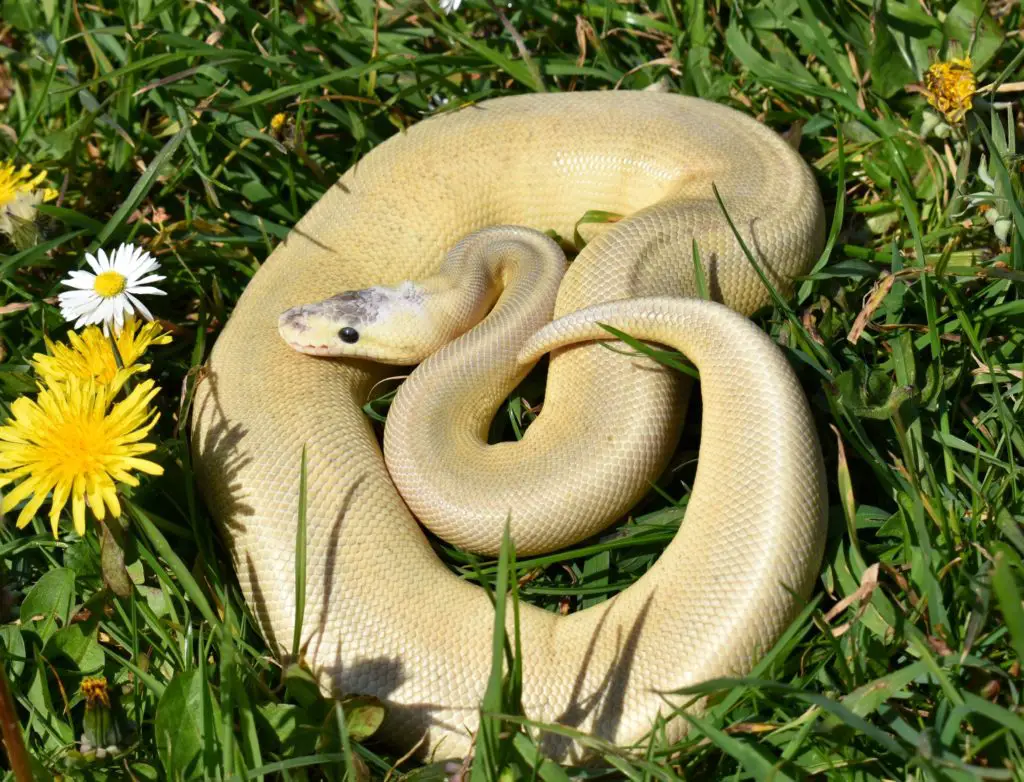
What is power feeding?
Another trap that people regularly fall into, including novice breeders, is power feeding. Power feeding means feeding a snake as much as it will possibly eat, until it is a fat, sickly, sausage-like animal.
This does increase growth rate but not in a healthy way. What it does in general is make a snake reach its full size more quickly, but at the cost of its health due to obesity.
As in humans, a common complication in obese snakes is heart disease and a reduced life span. It simply isn’t worth it. Furthermore, power feeding doesn’t seem to produce bigger, healthier clutches.
Quite the opposite, it can make animals less likely to breed, especially males. Any decent breeder will tell you: slow steady growth leads to snakes that are just as big and productive, but which live longer, happier lives. There are major differences between healthy growth and forced growth.
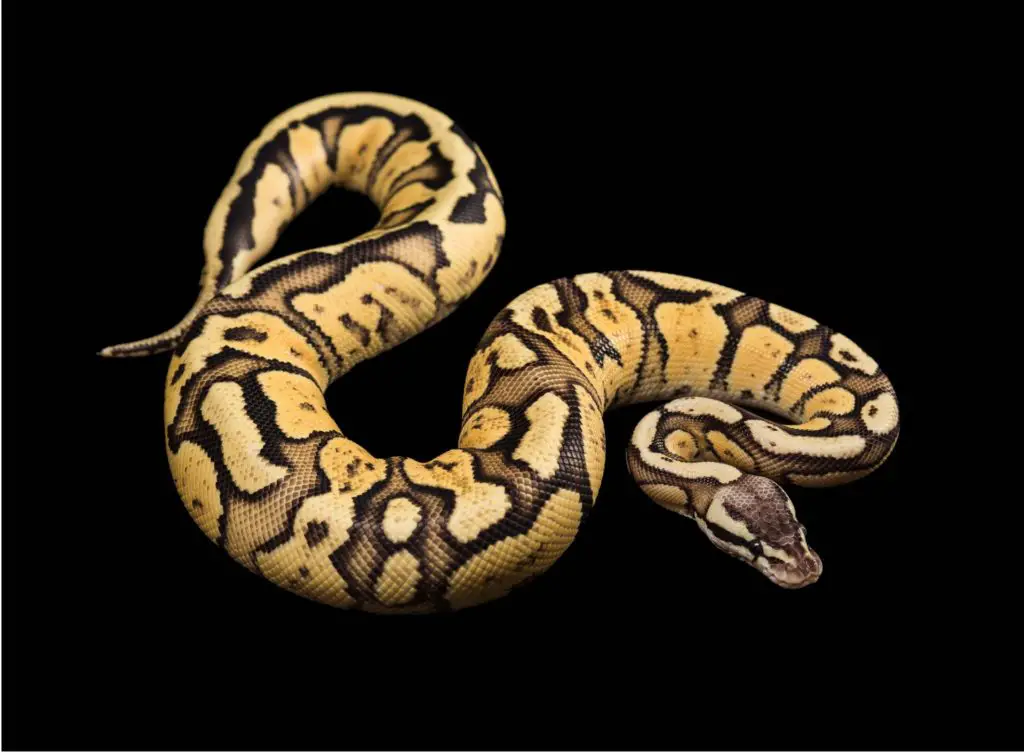
Ball Python Growth Chart
In this table you can see the average weight and length ranges for Ball Pythons I have bred over the years. This includes big babies, small babies, finicky eaters, and little pigs. You may notice that variation in size increases with age. This is no surprise, as some snakes do better right from the start, whilst others always stay picky.
Please turn your device to landscape if you’re having trouble seeing the whole table.
| Age | Length | Weight |
| Hatchling | 10-12in (25-30cm) | 40-70 grams |
| 2 months old | 12-14in (30-40cm) | 90-150 grams |
| 4 months old | 14-18in (35-45cm) | 150-300 grams |
| 6 months old | 18-24in (45-60cm) | 300-600 grams |
| 12 months old | 24-28in (60-71cm) | 600-900 grams |
| 24 months old | 28-36in (71-90cm) | 900-1800 grams |
| 36 months old | 28-48in (71-120cm) | 900-2250 grams |
| Males over 36 months old | 28-42in (71-107cm) | 1200-1800 grams |
| Females over 36 months | 3.5-4.5ft (1.06-1.37m) | 1800-3000 grams |
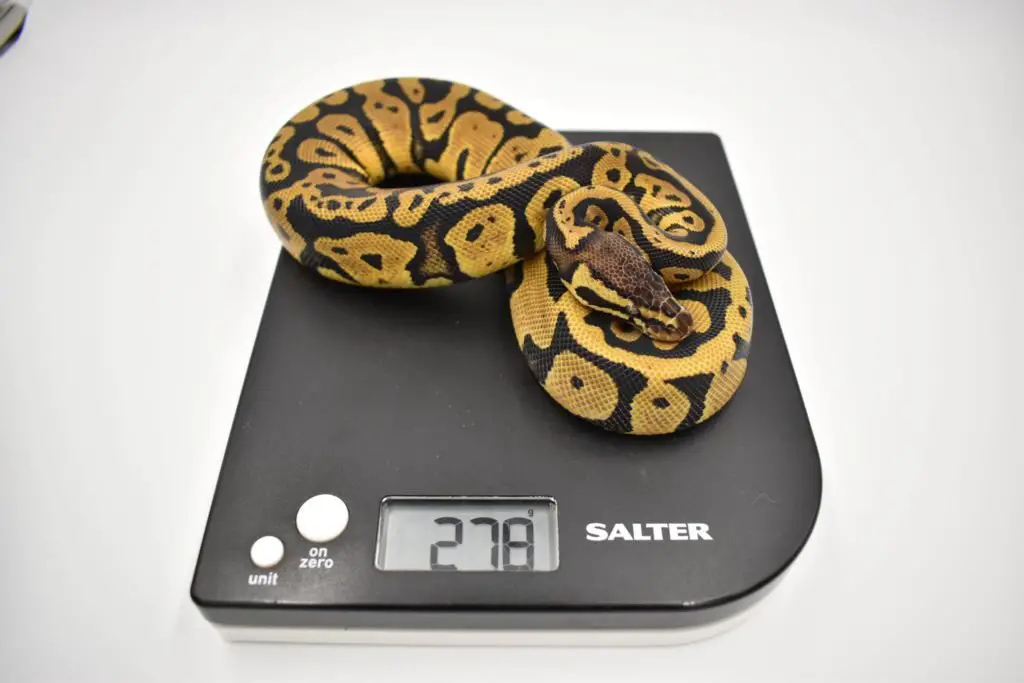
The Volta Ball Python
Up to this point I’ve been discussing the size of your average, run-of-the-mill Ball Python, which is what you’ll get from most breeders or pet shops around the world.
Now let’s discuss the Volta Ball Python…
This locality of ball python is from the Volta region of eastern Ghana and is reported to reach a much larger size than others, both in length and weight. In fact, many breeders have claimed to have seen Volta Ball Pythons that exceeded 6 ft (1.8m) in length. Unfortunately, the last Voltas I saw were about 5ft (1.5m) long, and this was a long time ago!
To help clear this up, I reached out to Darren Fawthrop of D & Jo’s Ball Pythons for an expert opinion. Darren and his wife Joanne are perhaps the longest running, most respected Ball Python breeders in the UK.
They were also the first breeders outside of the U.S. to win the Reptile Report award for Ball Python Personality of the Year in 2016. More to point, they have some Volta Ball Pythons in their collection!
Fortunately for me, Darren was incredibly helpful and sent me the following video of two female Volta Ball Pythons:
Volta Ball Pythons do appear to be larger than others
As you can see, these females are longer and more massive than your average ball python, at over 4000g. What makes this more surprising is that these animals were imported to be part of a breeding project.
Imports are often skinny, so in the future it’s not hard to imagine these females getting to the 6000g mark. When measured, the second female turned out to be at least 5.5ft (1.70m), though Darren said that he believed individuals of 6ft (1.80m) and over were possible.
Interestingly, in Darren’s experience, this locality of Ball Python also produces larger clutches – around 15. This fits perfectly with the idea that the species tends to lay as many eggs as it can wrap around. I don’t doubt this female could wrap around more than some of my 2000-3000g females!
Breeding projects with Volta Ball Pythons have shown that, as in other populations, their size appears to be a polygenic trait – not just a mutation. Breed a Volta to a normal, and the offspring will be of intermediate size.
Why they have evolved to grow larger is unclear but may be due to the fact their native habitat and climate are different to those of other populations. Parts of the Volta region are mountainous, whereas others are arid. Either of these factors can increase an animal’s size by eliminating predators, competition, or other limiting factors.
If you’d like to check out Darren and Joanne’s Ball Pythons, you can go to their website here: D & Jo’s Ball Pythons. They always have a variety of healthy babies for sale and a wealth of knowledge to share.
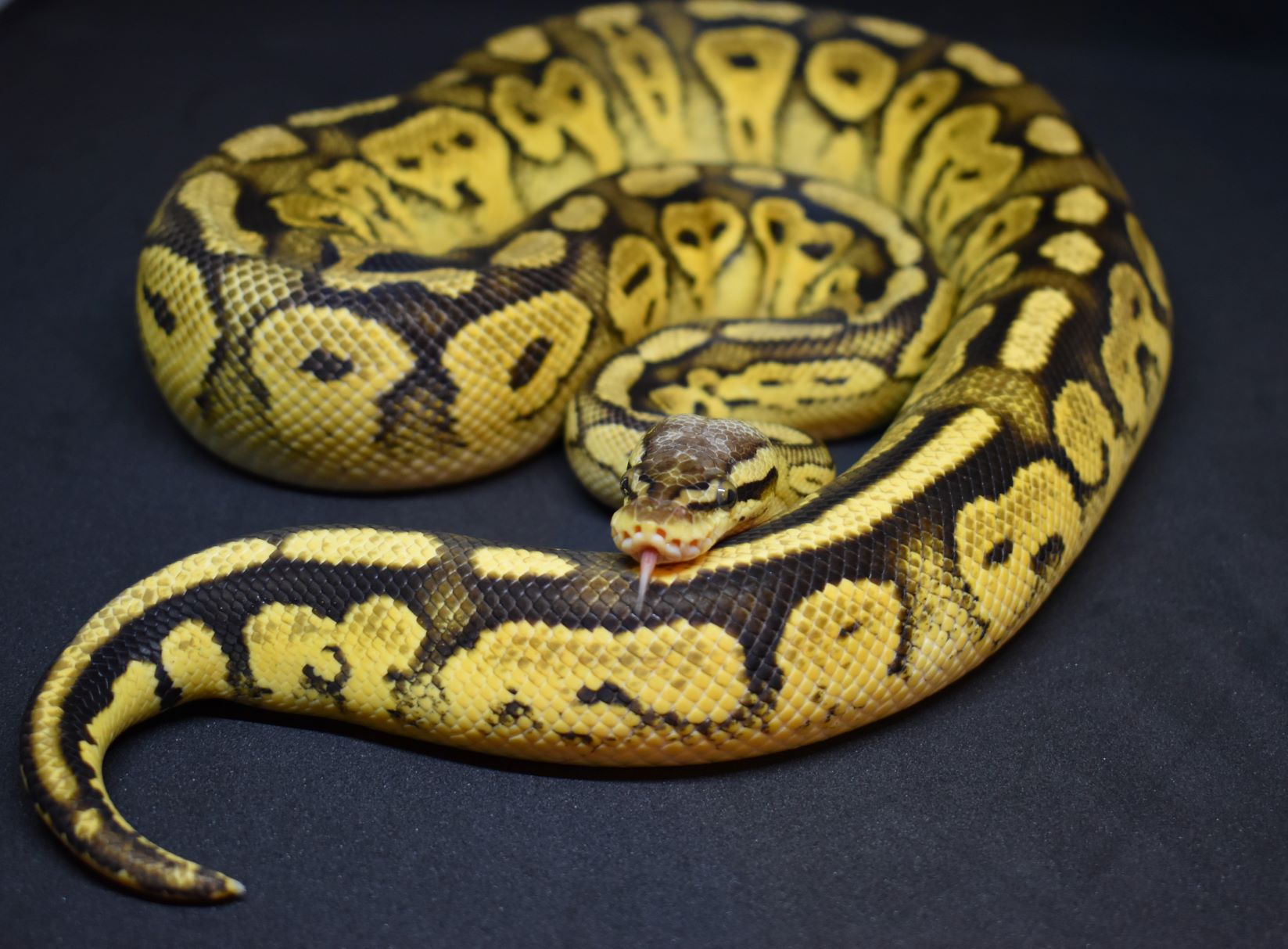
If you get a Ball Python, it’ll almost certainly end up between 3 and 5ft (90 and 152cm) long
So there it is guys, an in-depth look at how big Ball Pythons get. Hopefully this post will have given you an idea of why this question is not as straightforward as it might seem!
As we’ve seen, the Volta Ball Python is indeed bigger than your average Ball Python. It’s worth bearing in mind, however, that this locality isn’t imported or bred particularly often. When they are part of a breeding project, they are productive, hardy animals. Their scarcity in the hobby and large size makes it unlikely a breeder would sell you one by accident! If you buy a Ball Python, you’ll know if it’s a Volta or not.
The overwhelming majority of Ball Pythons we see for sale are regular Ball Pythons, and their average size, as determined by a combination of genes, is 3-3.5ft (90-106cm) for males and 3.5-4.5ft (106-137cm) for females. That is the bottom line!
Also on this topic:
- How long does it take for a Ball Python to grow? (and how care affects size)
- Volta Ball Python facts, myths, and truths
For more on Ball Python size in general:
Back to the Ball Python size page
